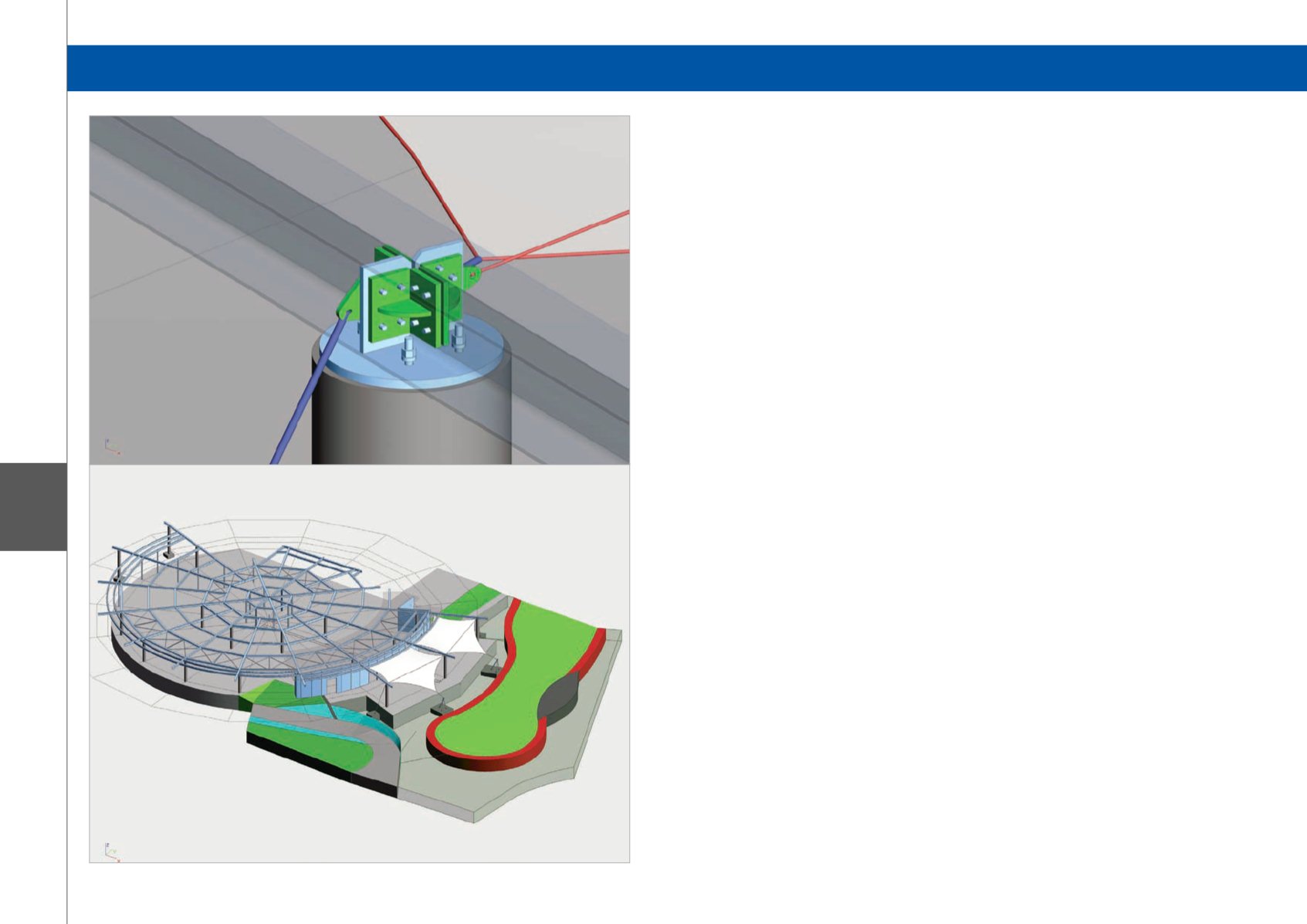
226
X4
Category 4: Special Projects
Software: Scia Engineer
Client
BASF SE, the largest chemical company in the world,
is headquartered in Ludwigshafen, Germany. The
BASF Group comprises subsidiaries and joint ventures
in more than 80 countries and operates six integrated
production sites and 390 other production sites in
Europe, Asia, Australia, the Americas and Africa. BASF
has customers in over 200 countries and supplies
products to a wide variety of industries.
BASF was founded on 6 April 1865 in Mannheim, in
the German-speaking country of Baden, by Friedrich
Engelhorn. He had been responsible for setting up
a gasworks and street lighting for the town council
in 1861. The gasworks produced tar as a byproduct,
and Engelhorn used this for the production of dyes.
BASF was set up in 1865 to produce other chemicals
necessary for dye production, notably soda and acids.
The plant, however, was erected on the other side of the
river Rhine at Ludwigshafen because the town council
of Mannheim was afraid that the air pollution of the
chemical plant could bother the inhabitants of the town.
In 1866 the dye production processes were also moved
to the BASF site.
Order
It was planned to renew the environment around the
plant cafe building in Ludwigshafen and the open space
in front of the cafe with many tables and seats that had
to be protected from the summer sun.
Two variants of membrane covering - permanent as a
cone and temporary as five-point anticlastic sail - were
developed, integrated into the environment with the
existing buildings and presented.
The temporary five-point sail solution - only for the
summer time - was chosen.
Software and modelling:
The given surroundings with the existing cafe structure
were built up in Scia Engineer with the Structure and
3D-Free-Modelling tools. The environment with the
appropriate part of the site structure was exported as
DWG/DXF to the form finding software - Formfinder - to
find and adjust the required form and then to Forten
Software for the membrane design.
The results of the formfinding and membrane
calculations were imported back in Scia Engineer to
design the support steel structure, anchors, edge/corner
details and foundation. All membrane reactions on the
existing steel beams and regular loads were set in Scia
too so that the additional load for the site building could
be verified. The fully detailed structure was developed in
one 3D model to be able to consider every distance and
height in 3D-Space precisely.
All the overviews, elevation, execution and detail
drawings were processed and created in Scia Engineer
with the help of the appropriate modelling and drawing
tools.
Execution
The covered area of the two anticlastic twin membrane
parts amounts to approx. 320 sq m and gives sufficient
sun protection for all the open space cafe places.
Soltis86 from Ferrari, Italy, was used for the covering.
The steel beams of the existing structure received newly
designed anchor details. Four new foundation blocks -
two with tension rods and two with steel bracing units
- were created. Additional tension rope was spanned
between the tops of the columns to achieve sufficient
stability during assembly. The planning was completed
by April 2011. The first assembly took place at the end
of May and lasted about 4 hours.
The production and execution were managed by the
company Planex Technik in Textil GmbH LU, Germany.
Cafe Open Space Membrane Covering, BASF - Ludwigshafen, Germany


